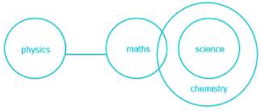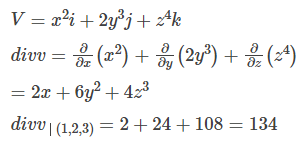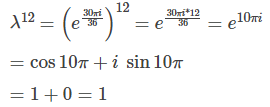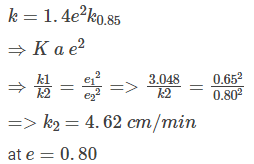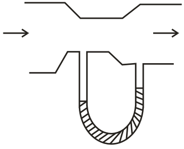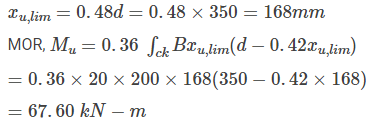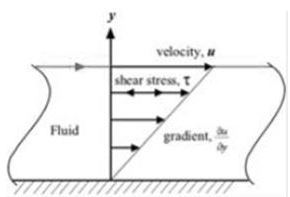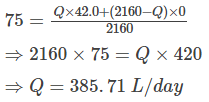Practice Test: Civil Engineering (CE)- 14 - Civil Engineering (CE) MCQ
30 Questions MCQ Test GATE Civil Engineering (CE) 2025 Mock Test Series - Practice Test: Civil Engineering (CE)- 14
There are two lines made by joining points A, B,C. B lies between the line joining A and C. Is the distance between the A and C passes through the B more then 7 Km.
I. The distance between A and B is 6 Km
II. Distance between B to C is 7 Km long,
Direction: In the given question, a word/phrase is given followed by three statements; I, II and III. Choose the pair of sentences which can be combined using the given word/ phrase when used at the beginning of the new sentence.
And
I: When Lionel Messi, Ronaldo and Neymar kick and dribble the football, they don’t remain confined to Argentina, Portugal or Brazil, respectively.
II: Let the entire world realise that through sports, especially football, we all can cement our bonds, wash away our bitterness and prejudices.
III: Live with a greater sense of closeness and joy with each other.
| 1 Crore+ students have signed up on EduRev. Have you? Download the App |
Which of the following is the MOST SIMILAR in meaning to Accreditation?
In how many ways can you place 2 white bishops on an empty chess board?
Direction: In the question below are given statements followed by some conclusions. You have to take the given statements to be true even if they seem to be at variance with commonly known facts. Read all the conclusions and then decide which of the given conclusions logically follows from the given statements disregarding commonly known facts.
Statement:
No physics is maths.
Some chemistry is maths.
All sciences are chemistry.
Conclusion:
I. No science is physics.
II. Some physics are science.
III. Some physics are chemistry
Direction: Read the information carefully and give the answer of the following questions-

(This pie chart shows the percentage of students appear in six different exams in 2016)

(This bar graph shows the percentage of failed students which appear in these six different exams in 2016)
If in 2016, total number of failed students in exam F was 4080, then how many passed students appears in the exam B?
Direction: Two sentences with two blanks in each, followed by five alternatives with two words in each, are given. Choose that option as the answer which can fill both the blanks of both the sentences.
i. A sinking feeling of panic ________ over them and a temporary paralyzing fear engulfed them ________.
ii. Being a cleanliness freak, she ________ the floor and went down to the market only after the house was _________ clean.
Direction: Five statements are given below, labelled 1, 2, 3, 4 and 5 which are supposed to be in a logical order. A statement labelled P is given thereafter. P can replace one of the five statements such that the four statements along with P would make a coherent paragraph. You have to identify which statement should P replace and then the find out the correct sequence from the options. If the five options are in logical order and form a coherent paragraph/passage, choose the fifth option “12345”.
1) The future of Germany’s coalition government is hanging in the balance after the country’s interior minister reportedly announced his intention to resign over a migration showdown with Angela Merkel.
2) Horst Seehofer, who is also leader of the Christian Social Union, on Sunday night offered to step down from his ministerial role and party leadership in a closed-door meeting in which he and fellow CSU leaders had debated the merits of the migration deal Merkel hammered out with fellow European Union leaders in Brussels.
3) But with CSU hardliners believed to have tried to talk the combative interior minister into staying, a press conference was postponed until Monday, with Seehofer seeking to go back to Merkel in search of a final compromise.
4) At a 2am media conference, Seehofer said he had agreed to meet again with Merkel’s party before he made his decision final.
5) “We’ll have more talks today with the CDU in Berlin with the hope that we can come to an agreement,” Seehofer said.
Direction: In the given question, a statement with a single blank is given. Choose the most effective word from the given options to complete the sentence meaningfully.
The fog was so thick during the morning, that it seemed like walking _________ a cloud.
4 identical solid spheres are melted and re-formed into a solid hemisphere. Then, the ratio of the curved surface area of the hemisphere to half of the surface area of a single sphere is -
A study of people who reduced the calories they consumed has found the strongest evidence yet that such restrictions slow down metabolism, raising hopes that a low calories lifestyle or treatments stimulating biological effects of restricted eating, could prolong health in old age. The report provides the most robust evidence to date that everything we have learnt in other animals can be applied to humans.
Which of the following argument will prove that the above conclusion is flawed?
The order and degree of the differential equation,  are respectively.
are respectively.
The divergence of the vector field x2i + 2y3j + z4k at x =1 , y= 2, z = 3 is
Let ![]() , then the smallest positive integer I , such that
, then the smallest positive integer I , such that ![]() is ______________
is ______________
In levelling, if the sum of back sight and fore sight is 1.365 and 0.875 m and reduced level of B.M. is 100 m. then reduced level of end point will be-
The maximum height of a low gravity dam of elementary profile made up of concrete of relative density 2.4 and safe allowable stress on foundation is 3.6MPa (Ignoring uplift force).
The level of water in the reservoir is 1.25 m. If there is a rainfall of 38 cm occurring in a month, during this period evaporation as measured by the class A pan is 32 cm. What is the level of water in m at the end of the month.
The permeability coefficient of sand with void ratio of 0.65 is 3.048 cm/min. Estimate the permeability coefficient at a void ratio of 0.8 using casagrande empirical relationship.
A 12 m3 moist soil sample with volume of soil solid as 9m3 is examined and the laboratory results reveal that the porosity of the soil sample is 25 %. The relative porosity of the sample is _____.
Which one of the following is correctly showing the level of manometer column.
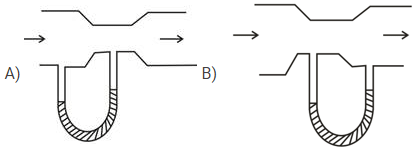
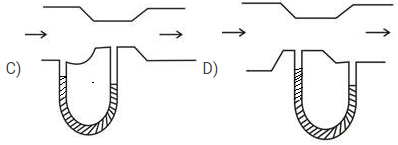
A singly reinforced rectangular beam has a width of 200 mm and an effective depth of 350 mm. The limiting value of the moment of resistance of the beam is _________ kN-m.
[Take M20 grade concrete and Fe415 grade steel and adopt the stress block for concrete as given in IS 456: 2000]
The slack of events 3 and 5 is from the project network given below?
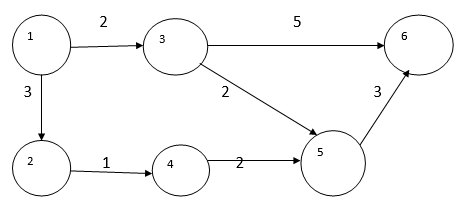
Figure shows the network for a particular project which consists of four activities.

Normal duration time and crash time for each activity are given below
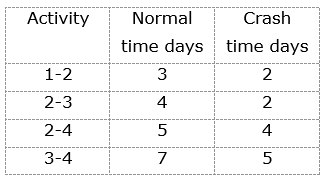
The velocity of fluid 2.234 m/s having a viscosity 0.023 Pa.s with density 2.345 is measured at a distance of 95 mm from the boundary. Find the shear stress at the boundary?
Which acid is used to distinguish the steel and the wrought iron on the field?
The topmost layer is loose, clean sand, 1.5 meter thick. Its vertical permeability can be estimated using Hazen’s formula with C = 1.5 and D10 = 0.016mm. Its horizontal permeability is known to be 350% of the Kv. Below the sand stratum is a layer of marl, 3.5 meters thick, with a kv = Kh = 10-4 m/s. what is the Equivalent Horizontal permeability for the upper 5 m in cm/sec?
Cayley-Hamilton Theorem states that a square matrix satisfies its own characteristic equation. Consider a matrix  A satisfies the relation
A satisfies the relation
The hardness of a ground water sample was found to be 420 mg/L as CaCO3 A softener containing ion exchange resins was installed to reduce the total hardness to 75 mg/L as CaCO3 before supplying to 4 households. Each household gets treated water at a rate of 540 L/day. If the efficiency of the softener is 100%, the bypass flow rate (expressed in L/day) is _____________.
Consider the matrix:
J6= [0 0 0 0 0 1 0 0 0 0 1 0 0 0 0 1 0 0 0 0 1 0 0 0 0 1 0 0 0 0 1 0 0 0 0 0 ]
Which is obtained by reversing the order of the columns of the identity matrix I6.
Let P=I6+αJ6, where α is a non-negative real number. The value of α for which det(P) = 0 is ___________.
A beam of uniform strength is to be produced for a special purpose of application. But the section of the beam needs to be varied, and this could be achieved by;
|
31 docs|280 tests
|
|
31 docs|280 tests
|


